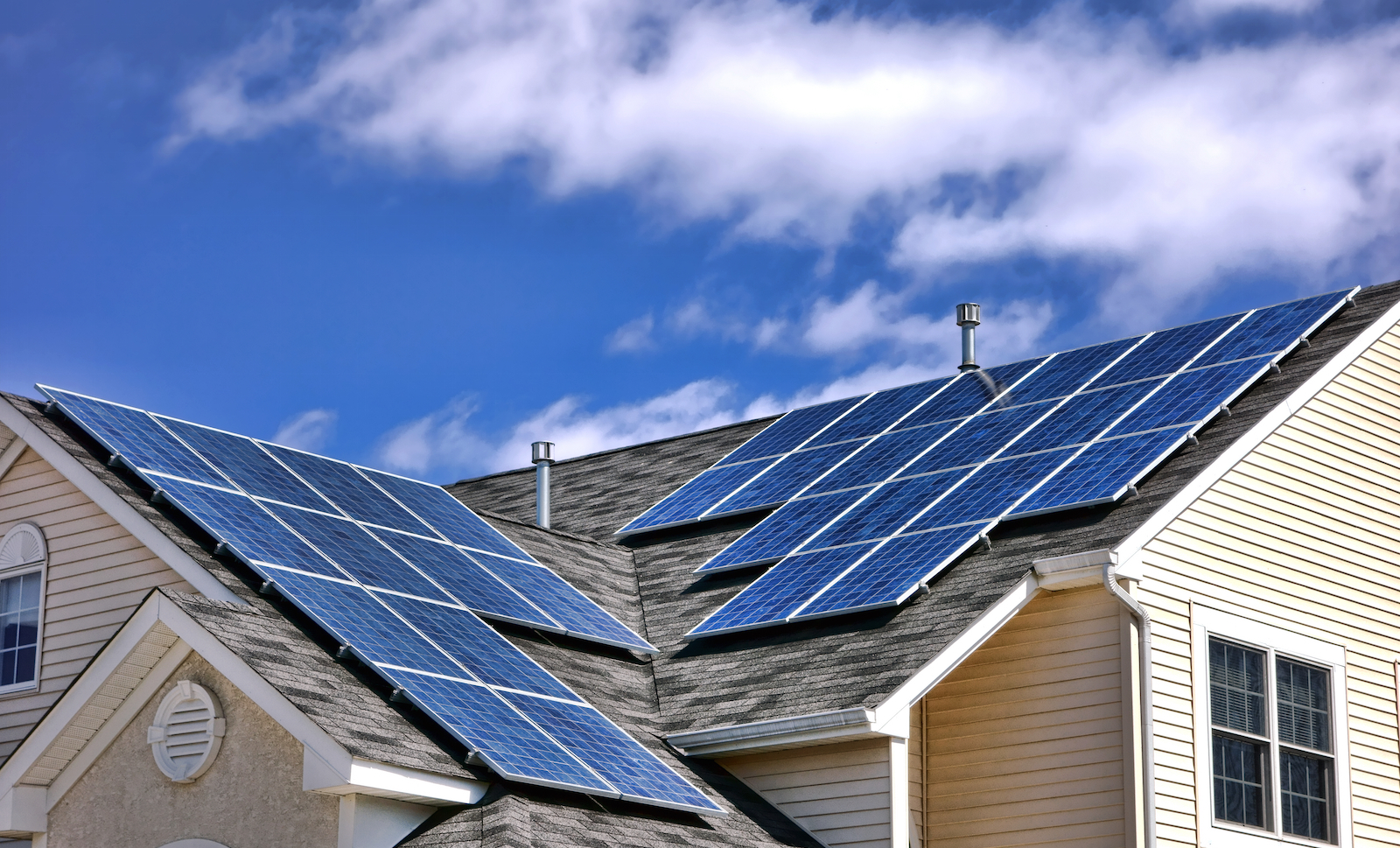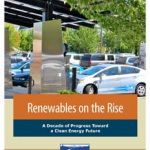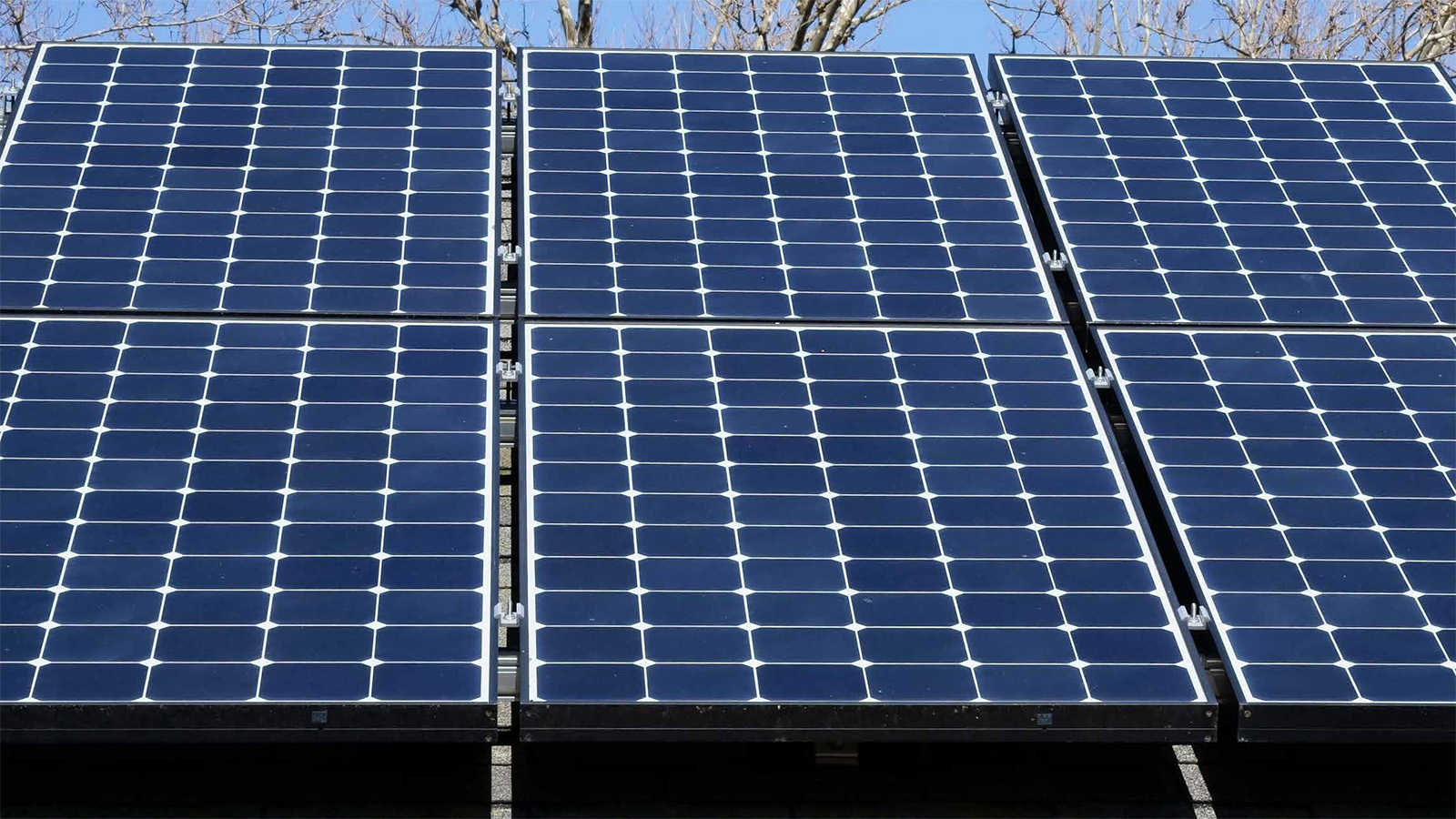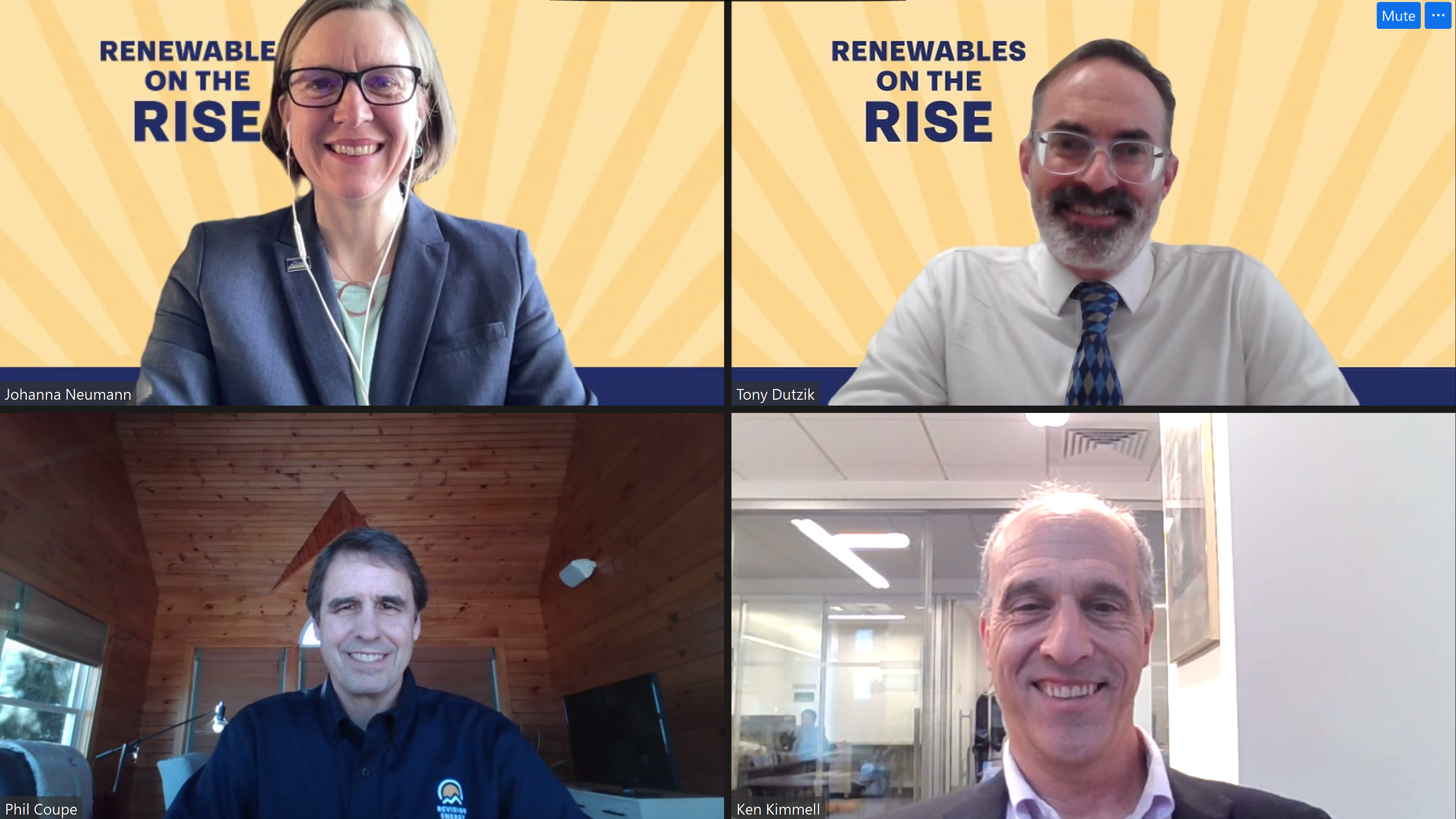
Renewables on the Rise
A Decade of Progress Toward a Clean Energy Future
Clean energy is sweeping across America, and is poised for further dramatic growth in the years ahead.
Downloads
Environment America Research and Policy Center

Executive Summary
Clean energy is sweeping across America, and is poised for further dramatic growth in the years ahead.
Wind turbines and solar panels were novelties 10 years ago; today, they are everyday parts of America’s energy landscape. Energy-saving LED light bulbs cost $40 apiece as recently as 2010; today, they cost a few dollars at the local hardware store. Electric cars and the use of batteries to store excess energy on the grid seemed like far-off solutions just a few years ago; now, they are poised to break through into the mass market.
Virtually every day, there are new developments that increase our ability to produce more renewable energy, apply renewable energy more widely and flexibly to meet a wide range of energy needs, and reduce our overall energy use – developments that enable us to envision an economy powered entirely with clean, renewable energy.
America produces nearly eight times as much renewable electricity from the sun and the wind as in 2007, and in March 2017, for the first time ever, wind and solar produced 10 percent of America’s electricity. At the same time, the average American uses 10 percent less energy than a decade ago, due in great part to improvements in energy efficiency.
The last decade has proven that clean energy technology can power American homes, businesses and industry – and leaves America poised to dramatically accelerate its shift away from fossil fuels. With renewable energy prices falling and new energy-saving technologies coming on line every day, America should work to obtain 100 percent of our energy from clean, renewable sources.
The last decade has seen explosive growth in the key technologies needed to power America with clean, renewable energy.
- Solar energy: America produces 43 times more solar power than it did in 2007, enough to power more than 5 million average American homes. In 2007, solar rooftops and utility-scale solar power plants produced 0.03 percent of U.S. electricity; by 2016, they produced 1.4 percent of America’s power.
- Wind energy: America produces seven times as much wind power as it did in 2007, enough to power 21 million homes. In 2007, wind turbines produced 0.8 percent of the nation’s electricity; by 2016, they produced 5.5 percent of America’s power.
- Energy efficiency: America uses 3.6 percent less energy than in 2007, in great part due to more energy efficient lighting, appliances and cars. The average American uses 10 percent less energy than in 2007, and the nation’s energy consumption per unit of GDP has fallen by 14 percent.
- Electric vehicles: Building an economy reliant on clean, renewable energy means ending the use of fossil fuels for all activities, including transportation. There were 157,000 electric vehicles sold in the U.S. in 2016, up from virtually none in 2007. Electric vehicle sales surged by nearly 40 percent in 2016 over 2015, fueled by lower prices, better performance and a range of attractive and affordable new vehicle models. In the first five months of 2017, electric vehicle sales were up an additional 44 percent over 2016.
- Energy storage: Expanding the ability to store electricity can help the nation take full advantage of its vast potential for clean, renewable energy. The United States saw a 20-fold increase in utility-scale battery storage from 2007 to 2016, with the greatest increase taking place in 2016. The recent introduction of home electricity storage systems produced by companies like Tesla could set the stage for further growth in the years to come.
Clean energy leadership is not concentrated in one part of the country. Rather, it is distributed across the United States, in states with different economic and demographic makeups, driven by a combination of clean energy attributes and policies that have helped clean energy measures succeed.
- Solar energy: California, Arizona, North Carolina, Nevada and New Jersey have seen the greatest total increases in solar energy since 2007. California’s landmark “Million Solar Roofs” program, which accelerated the state’s solar industry in the mid-2000s, along with its strong renewable electricity standard and other policies, helped to trigger the dramatic rise of solar power there.
- Wind energy: Texas, Oklahoma, Iowa, Kansas and Illinois experienced the greatest total increases in wind energy generation from 2007 to 2016. Texas’ policies to upgrade its grid to accommodate more wind power from rural west Texas played an important role in the boom.
- Energy efficiency: Rhode Island, Massachusetts, Michigan, Illinois and Maryland saw the greatest increases in the share of electricity saved through efficiency measures, according to the American Council for an Energy-Efficient Economy. By 2015, Rhode Island was implementing efficiency measures designed to save the equivalent of 3 percent of statewide electricity consumption in their first year.
- Electric vehicles: California, Hawaii, Oregon, Washington and Georgia have seen the most plug-in electric and plug-in hybrid vehicles sold since 2012, as a percentage of in-state vehicles. Six of the top 10 states for EV sales require that a certain percentage of each automakers’ sales be zero-emission vehicles, including California, which is home to nearly half of the nation’s electric vehicles.
- Energy storage: California, Illinois, West Virginia, Ohio and Pennsylvania lead the nation in additions to energy storage since 2007, though the industry is still in its infancy. All of those states, except for California, are part of the PJM regional grid; PJM (the regional transmission organization that operates the electric grid in much of the Mid-Atlantic and Midwest) increased battery storage as a response to a decision by the Federal Energy Regulatory Commission to increase compensation for grid additions that allow for rapid changes in electricity production.
Rapid improvements in technology and plummeting prices for clean energy suggest that America has only begun to tap its vast clean energy potential.
- Nearly every segment of the clean energy market is seeing rapid price declines. A Department of Energy survey of clean energy prices found that, from 2008 to 2015, the cost of land-based wind energy fell by 41 percent; the cost of distributed solar photovoltaics (PV) capacity by 54 percent; the cost of utility-scale PV by 64 percent; the cost of batteries by 73 percent; and the cost of LED bulbs by 94 percent. Today, after years of price declines, the unsubsidized costs of utility-scale wind and solar energy have fallen to levels that are “cost-competitive with conventional generation technologies under some scenarios,” according to Lazard’s most recent levelized cost of energy survey.
- Experts predict that prices will continue to fall. A recent survey of wind energy experts by the National Renewable Energy Laboratory found that the global price of wind power is expected to fall 24-30 percent by 2030 and 35-41 percent by 2050. Bloomberg New Energy Finance predicts that “[b]y 2025, solar may be cheaper than using coal on average globally,” even when the costs imposed by coal use on public health and the environment are excluded.
- Technology advances are also making renewable energy technologies more efficient and effective. In 2007, the highest-capacity wind turbine in the world was 6 MW, with only one such test prototype actually in operation. Today, an entire wind farm of 8 MW turbines is generating electricity off the coast of England; according to DONG Energy, which led the project, a single revolution of the blades on just one turbine can power a home for 29 hours. Meanwhile, the average residential solar panel installed in 2015 was 18 percent more efficient than that installed just five years earlier, in 2010.
- Advanced new products are also helping to reduce energy consumption. For example, sales of smart thermostats, which give homeowners more control over home energy use, grew from 2 million units in 2013 to 5 million units in 2015.
The U.S. should plan to meet all of its energy needs – for electricity, transportation and industry – with clean, renewable energy, and put policies and programs in place to achieve that goal.
- Repowering America with clean, renewable energy is a key strategy in phasing out carbon pollution by 2050 – a necessary step to prevent the worst impacts of global warming. Transitioning to clean, renewable energy will also improve our health by preventing hazardous air pollution, and increase our safety by protecting us from the hazards of extracting, transporting and processing dangerous fuels.
- America’s renewable energy resources are sufficient to power the nation several times over. The technologies needed to harness and apply renewable energy are advancing rapidly. And researchers from a wide variety of academic and governmental institutions have developed a variety of scenarios suggesting renewable energy can meet all or nearly all of our society’s needs.
- While clean, renewable energy is advancing rapidly, fully replacing fossil fuels will require additional commitment and action. If the nation were to install as much renewable energy every year as we did in 2016, by 2050 American would be producing enough electricity to meet only 57 percent of today’s electricity demand, before accounting for non-electricity energy needs.
- To accelerate progress, a growing number of businesses, cities and states are adopting 100 percent renewable energy targets and goals. In 2015, Hawaii became the first state in the country to set a 100 percent renewable energy requirement for its electricity sector, through its renewable energy standard. According to the Sierra Club, 29 cities have committed to 100 percent renewable energy, and six cities have already achieved it. The organization RE100 has collected 100 percent renewable energy commitments from 96 companies, including Bank of America, Google, and Anheuser-Busch InBev.
America has already made incredible progress toward getting its energy from clean, renewable sources. Policymakers at all levels should fully commit to repowering America with clean, renewable energy.
Topics
Find Out More


Recording of Rooftop Solar on the Rise webinar

Rooftop solar on the rise



